I have a pretty laid back approach to most things, but there are a few hard and fast rules the team and I abide by when it comes to the tools we use for day-to-day operations. One of them revolves around the importance of using the right tool for the job, especially when it comes to sharp objects and anything used to cut, chop, snip or lop.
I learned it the hard way. In the early years, I was pretty sloppy with our tools. I would grab whatever was closest to harvest flowers, trim stems, and snip wires. I ruined a lot of expensive clippers in the process. And I also almost ruined my hands. I was young and felt invincible, but after hours of repetitive work, day in and day out, carpel tunnel slowly started to creep in. The pain was a real wake up call and I knew I had to make some serious changes in how I operated.
The experience definitely made me appreciate the fact that my hands are one of the most important tools for farming, designing, writing, and well, just about everything I do, so keeping them safe and healthy is essential. I now have some pretty strict rules about what cutting tools are used for each job. No more shortcuts. No more cutting chicken wire with my floral snips. No more oversized, heavy clippers for harvesting. No more excuses.
Here are my top seven tools I use on a regular basis to cut, snip, chop, prune and lop:
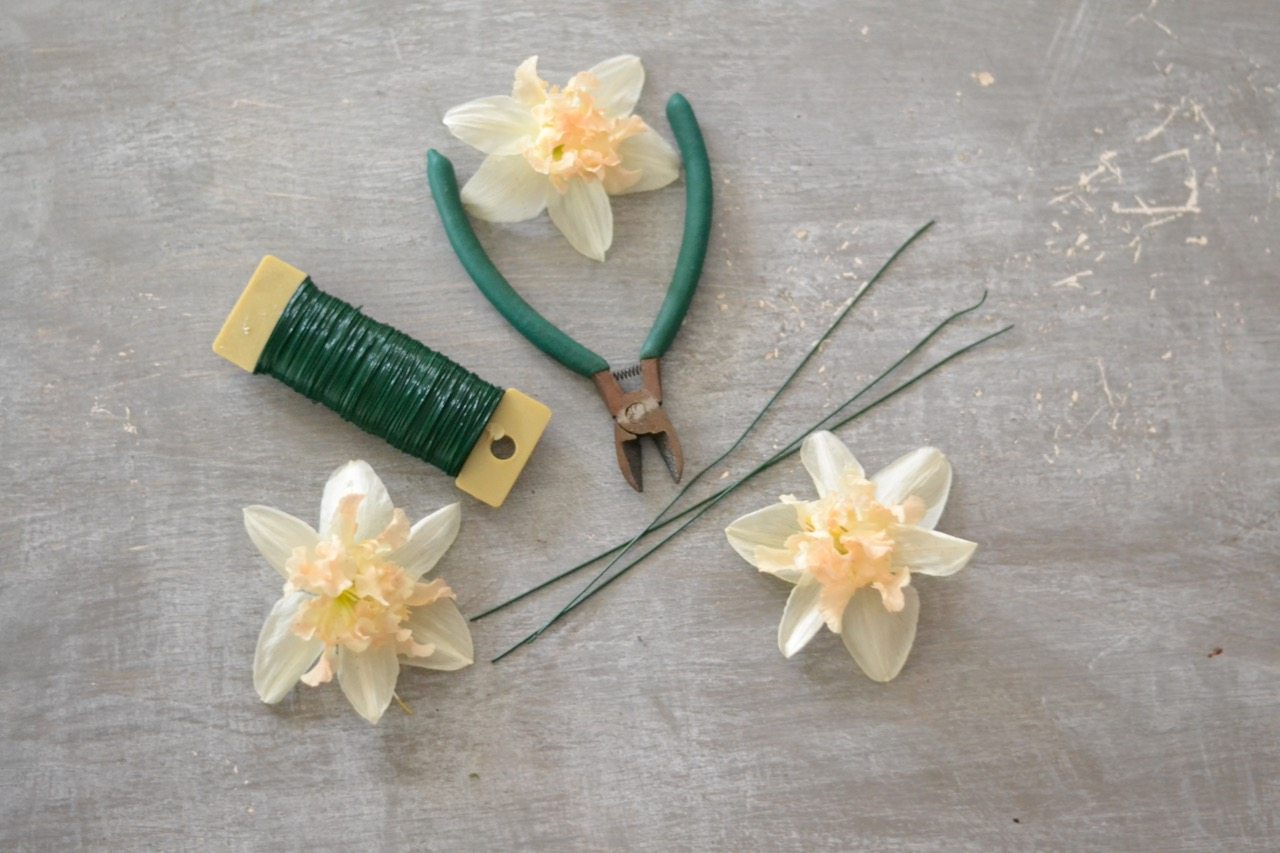 Wire cutters: Chicken wire is essential to most of my floral designs–I use it almost exclusively to support the stems of my flowers and give the designs a more natural look. I also use standard floral wire for boutonnieres and a few other floral design elements. Cutting all that wire can be quite a job—a job for a good pair of wire cutters! Flower snips are, as their name suggests, great for clipping flowers. They are NOT, however, made for cutting wire. Sure, a great pair can do it. But they really shouldn’t do it. And trust me when I tell you: just don’t do it. Using flower snips to cut wire is a surefire way to –at best–dull your blade–or at worst, bust it. Save your hands and your tools from a lot of stress by investing in a good pair (or two) of good wire cutters. I use large, industrial-strength wire cutters for chicken wire and smaller wire cutters for boutonniere work.
Wire cutters: Chicken wire is essential to most of my floral designs–I use it almost exclusively to support the stems of my flowers and give the designs a more natural look. I also use standard floral wire for boutonnieres and a few other floral design elements. Cutting all that wire can be quite a job—a job for a good pair of wire cutters! Flower snips are, as their name suggests, great for clipping flowers. They are NOT, however, made for cutting wire. Sure, a great pair can do it. But they really shouldn’t do it. And trust me when I tell you: just don’t do it. Using flower snips to cut wire is a surefire way to –at best–dull your blade–or at worst, bust it. Save your hands and your tools from a lot of stress by investing in a good pair (or two) of good wire cutters. I use large, industrial-strength wire cutters for chicken wire and smaller wire cutters for boutonniere work.
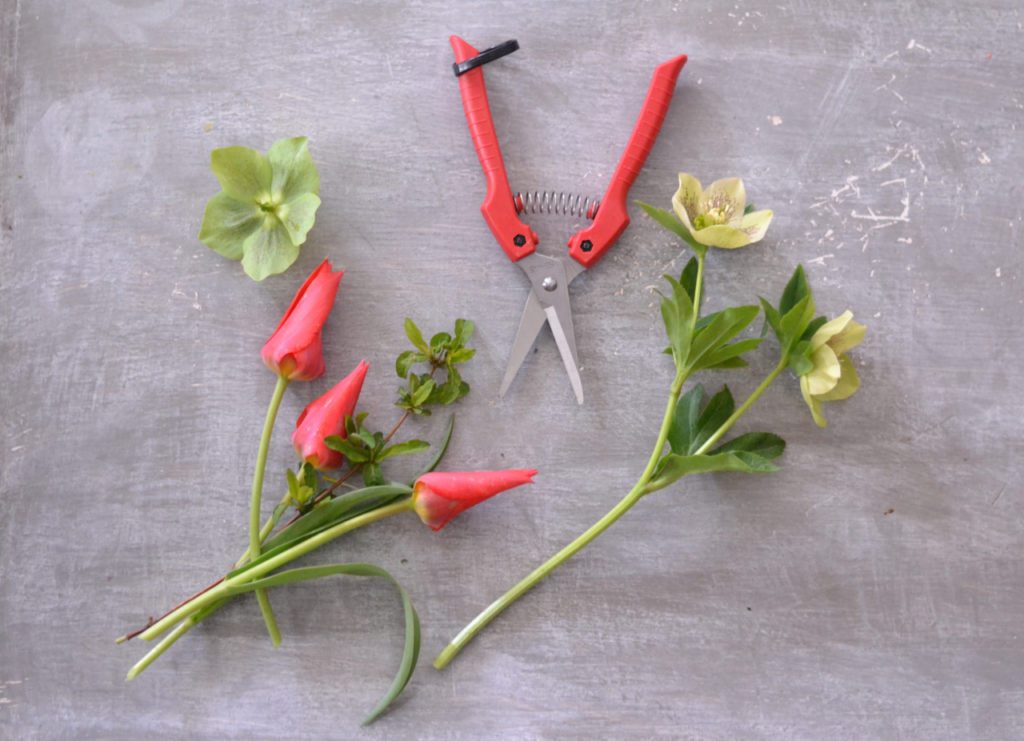 Floral snips: After my battle with carpel tunnel, I made it my mission to find the right flower clippers for the job. After trialing dozens of different pairs in the flower field, I finally found what I consider to be the perfect flower snips. They are lightweight, stay super sharp, and are perfectly shaped to rest in the palm of my hand. The thin, pointed blades are ideal for harvesting delicate flowers like sweet peas and ranunculus, but also handle thicker stemmed varieties such as dahlias and zinnias with ease. After I started using these with more regularity, I didn’t have aching wrists or sore hands at the end of the day. After fielding dozens of requests for them, we started offering my favorite snips in the Floret Shop along with our signature farmer-florist toolbelt.
Floral snips: After my battle with carpel tunnel, I made it my mission to find the right flower clippers for the job. After trialing dozens of different pairs in the flower field, I finally found what I consider to be the perfect flower snips. They are lightweight, stay super sharp, and are perfectly shaped to rest in the palm of my hand. The thin, pointed blades are ideal for harvesting delicate flowers like sweet peas and ranunculus, but also handle thicker stemmed varieties such as dahlias and zinnias with ease. After I started using these with more regularity, I didn’t have aching wrists or sore hands at the end of the day. After fielding dozens of requests for them, we started offering my favorite snips in the Floret Shop along with our signature farmer-florist toolbelt.
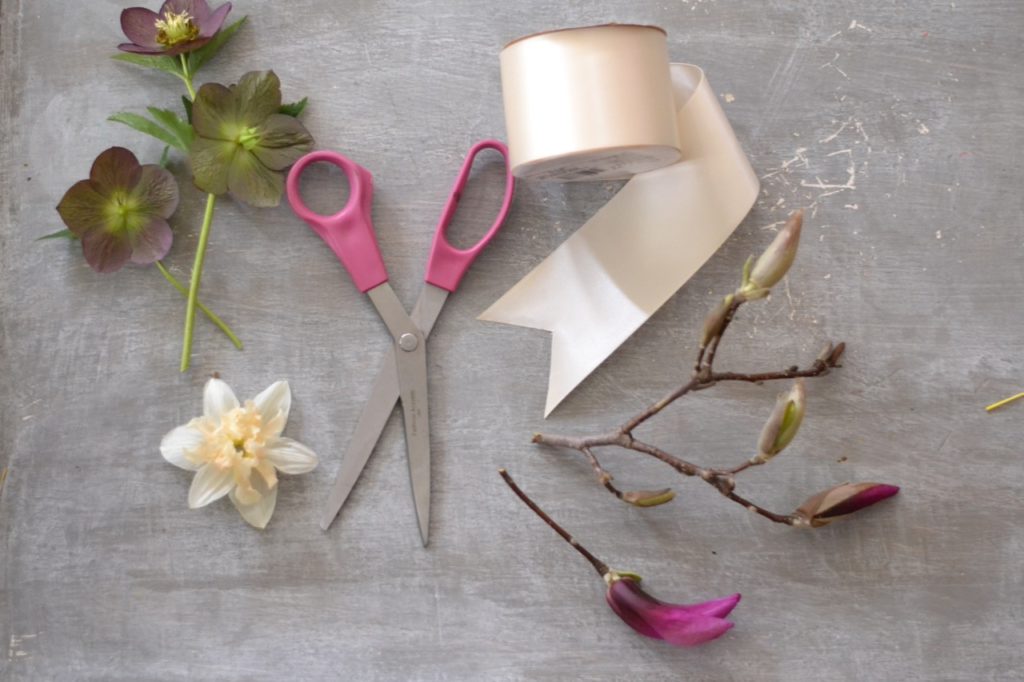 Ribbon scissors: Every bridal bouquet we create is a serious labor of love. I babied the blooms from seed, planted them into the field as baby plants, fed them lots of good stuff, protected them from weeds, harvested them and then lovingly arranged them into a lush, fresh-from-the garden design. The final step before handing the bouquet over to a jittery bride: wrapping the stems with pretty hand-died silk ribbons–the perfect finishing touch to this floral work of art. Perfect, that is, IF you can cut the &%$#@! ribbon. Hint: Floral snips don’t work. Neither do standard office scissors.
Ribbon scissors: Every bridal bouquet we create is a serious labor of love. I babied the blooms from seed, planted them into the field as baby plants, fed them lots of good stuff, protected them from weeds, harvested them and then lovingly arranged them into a lush, fresh-from-the garden design. The final step before handing the bouquet over to a jittery bride: wrapping the stems with pretty hand-died silk ribbons–the perfect finishing touch to this floral work of art. Perfect, that is, IF you can cut the &%$#@! ribbon. Hint: Floral snips don’t work. Neither do standard office scissors.
There’s nothing more frustrating than trying to finish a bridal bouquet and grabbing a pair of snips to try to trim the ribbon, only for it to fray because I don’t have the right scissors. Ribbons, like any fabric, require specialized scissors to be able to get the nice smooth lines for your fishtail or angled cuts. Using anything other than fabric scissors (which you can find in most craft or fabric stores) to cut your ribbon will likely mean mangling and fraying it and frustrating you. In the Floret studio, I have our ribbon scissors marked so that they’re easily distinguished from paper scissors. And I lay down the law when it comes to their use–they absolutely, positively, no-exceptions granted, can NOT be used to cut flower stems or (gasp!) wire.
I always have an extra pair of ribbon scissors and wire cutters in my Wedding Flower Emergency Kit and my snips and pruners are always close- at-hand thanks to my new handy-dandy farmer-florist tool belt given to me by a friend. Other essential cutting tools I have around the garden and studio include:
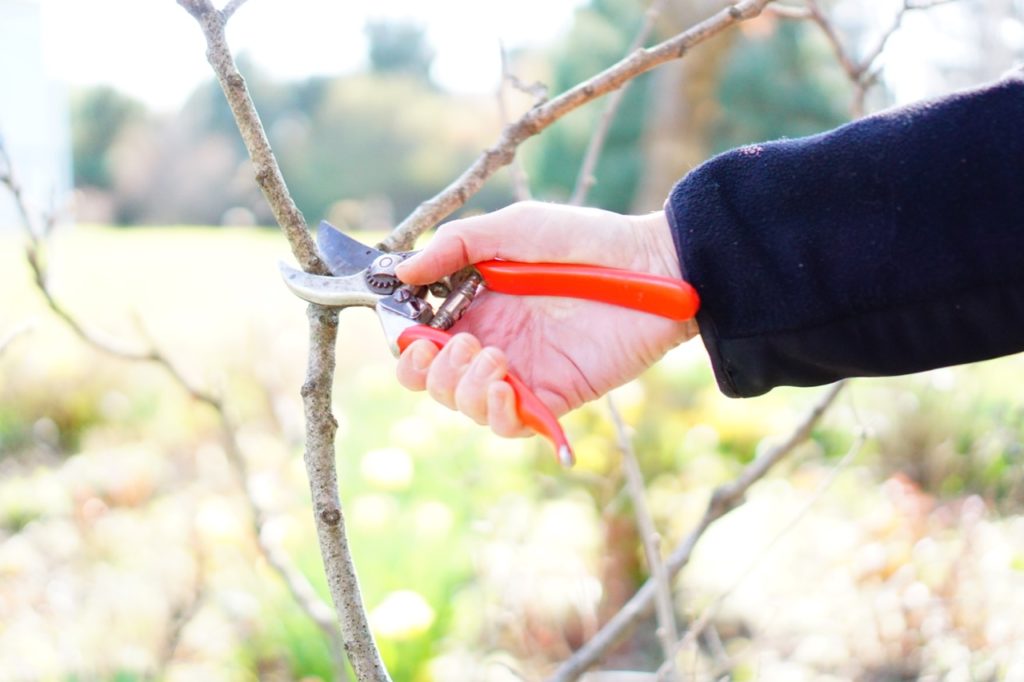 Pruners: Similar to my situation with flower snips, I struggled to find pruning shears that won’t tax my hands and wrists but can still handle the heavy-duty cutting jobs in the garden and flower studio. After testing dozens of pairs, I finally found some smaller-sized, but heavy-duty pruning shears that I love. The ultra-sharp blades and sturdy handgrips make them ideal for pruning woody stems like roses, shrubs and trees – they can cut through thick branches like butter! Even though they are strong enough for heavy-duty garden work, they are also compact and lightweight, making them perfect for women seeking an alternative to the heavy, giant-sized pruners built for burly landscaping dudes.
Pruners: Similar to my situation with flower snips, I struggled to find pruning shears that won’t tax my hands and wrists but can still handle the heavy-duty cutting jobs in the garden and flower studio. After testing dozens of pairs, I finally found some smaller-sized, but heavy-duty pruning shears that I love. The ultra-sharp blades and sturdy handgrips make them ideal for pruning woody stems like roses, shrubs and trees – they can cut through thick branches like butter! Even though they are strong enough for heavy-duty garden work, they are also compact and lightweight, making them perfect for women seeking an alternative to the heavy, giant-sized pruners built for burly landscaping dudes.
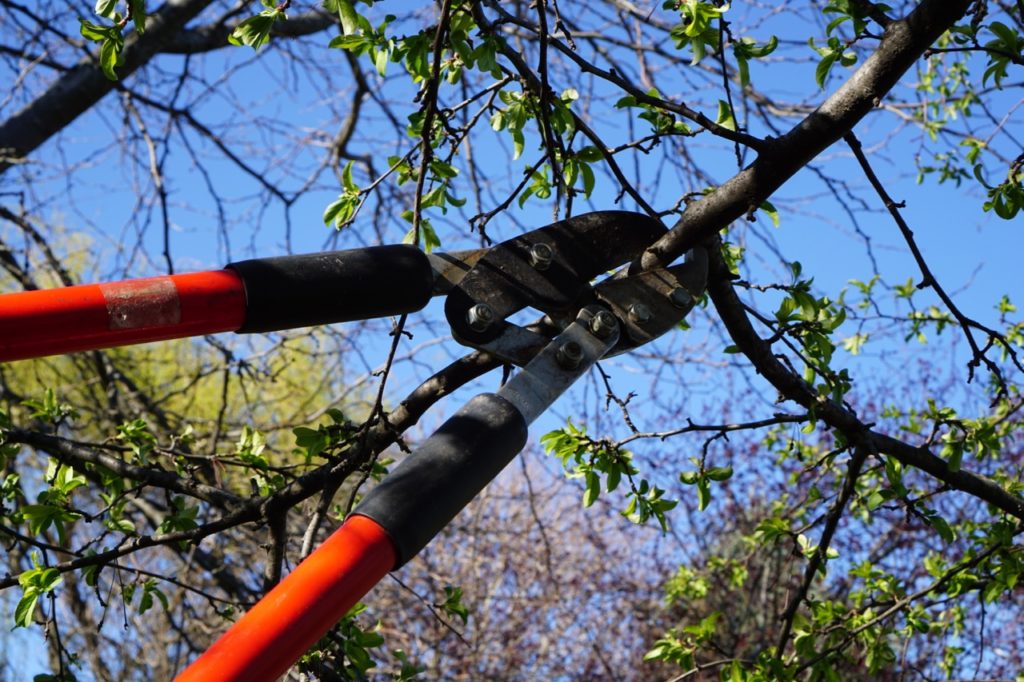 Loppers: Heavy duty, long-handled loppers are an essential tool to reaching some of my favorite flowering branches like crab apples, viburnum and foraged lilacs, which smell so sweet.
Loppers: Heavy duty, long-handled loppers are an essential tool to reaching some of my favorite flowering branches like crab apples, viburnum and foraged lilacs, which smell so sweet.
Stem Cutter: Also known as “the guillotine,” this serious stem cutter is an essential tool for florists and flower farmers alike. Attached to a table in our studio, it makes quick work of bulk cutting of stems in one smooth movement. We use it to trim & “even out” the stems of our grocery bunches before packing them (you can actually watch me use our stem cutter in the Martha Stewart American Made video). It’s also great for giving bunches of flowers a quick trim prior to design work–which also helps to prolong vase life. For designers, its the first thing they use when processing flowers in preparation for storage or design. This little tool has saved us tons of time and wrist-ache and no studio is complete without this essential tool. You can find them from floral supply companies and also on Amazon.
Soil /Hori-Hori Knife: Japanese for “dig-dig,” a hori-hori knife is an essential tool around the garden that we use all the time for digging, sawing and dividing plants with ease. One of the most versatile tools for gardening, this thing can be used for transplanting, weeding, opening plastic bags and cutting twine.
Do you have a favorite cutting tool that’s not on the list? I’m always on the hunt for new treasures, so please share what you love below.

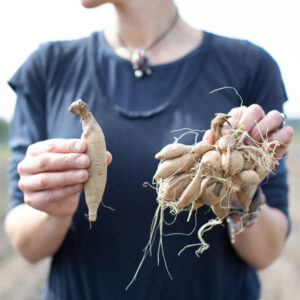

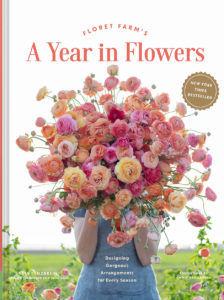
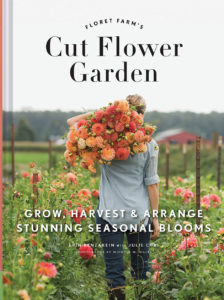


Landscape Design Bend on
“Soil /Hori-Hori Knife: Japanese for “dig-dig,”” Was wondering what it meant. Thank you!